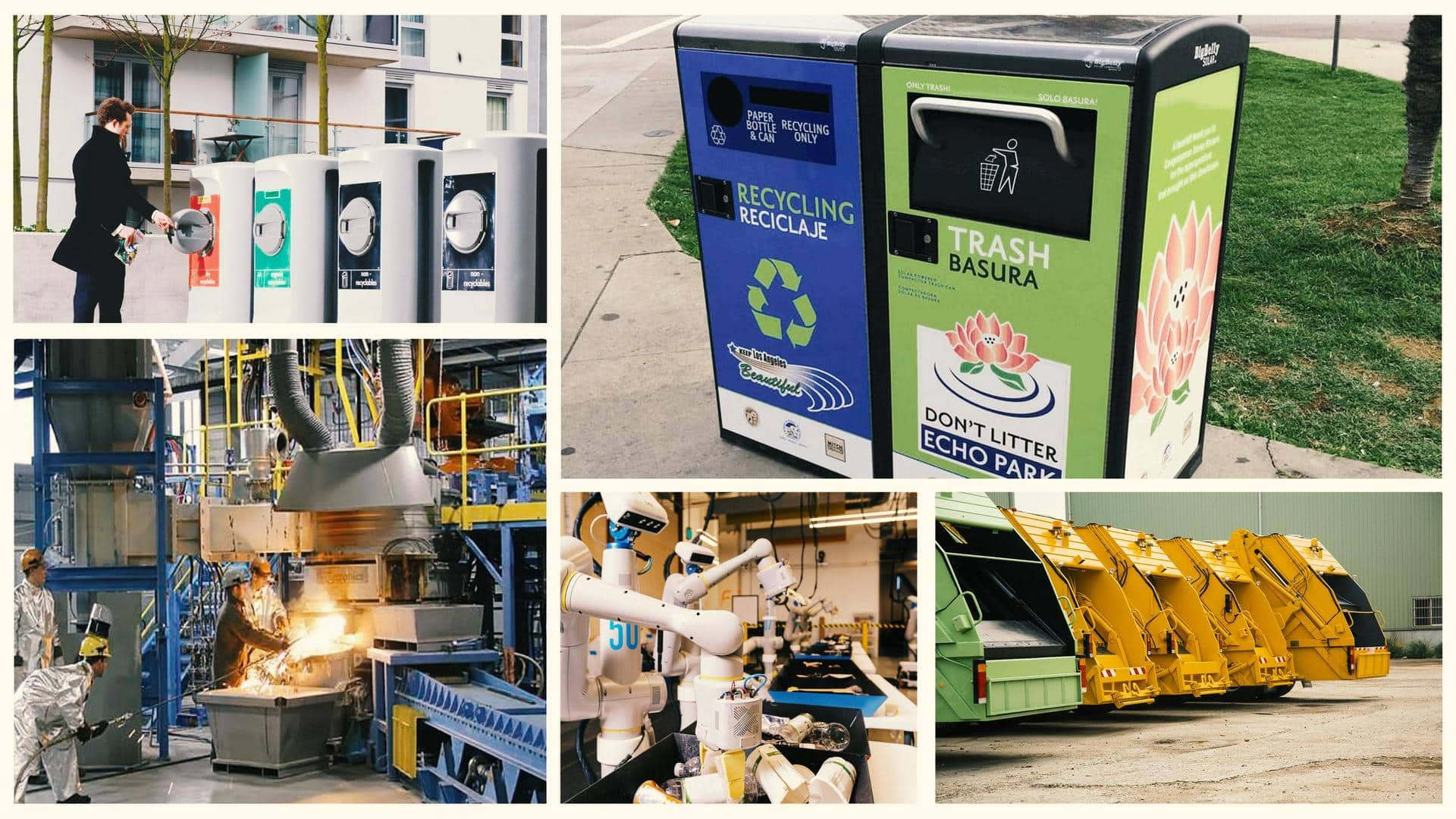
5 high-tech solutions shaping the future of waste management
What's the story
More and more people are now becoming environmentally conscious about waste disposal with new solutions emerging that are challenging traditional ideas of waste management. Technology is playing a huge role in this change. On this Earth Day let us take a look at five high-tech waste management ideas that are changing the game, in order to make our world a cleaner, greener place.
Plasma gasification
Plasma gasification
Have you heard of plasma gasification? It's a fancy new way to deal with waste, generating a lot of buzz. It heats up trash using plasma until it turns into sustainable fuel sources like hydrogen. This is super cool because it not only helps reduce the amount of waste that ends up in landfills but also creates a renewable energy source.
Waste bins
Smart trash cans
Smart trash cans are taking the garbage game to a whole new level. With sensors that can detect trash levels and alert users when they are full, these bins are making waste management more efficient. But it doesn't stop there - some bins even have interactive screens that can tell people how to dispose of different items or communicate the environmental impact of trash.
Waste collection
Pneumatic waste collection
Cities typically rely on fossil fuel-powered trucks for trash pickup, which is not very efficient and contributes to emissions. To combat this issue, some areas have adopted vacuum suction via underground pneumatic tubes. With minimal energy consumption and no trucks involved, emissions are no longer a concern. These systems are also faster, providing more time to sort rubbish at waste management plants.
AI
AI sorting
When waste sorting is done incorrectly, it can lead to improper disposal and the loss of opportunities to recycle or repurpose materials. Artificial intelligence (AI) can reduce these mistakes in waste sorting. AI, through machine vision, can help identify and sort different types of waste more efficiently. By providing insights into areas' disposal practices, companies can maximize recycling and avoid environmentally hazardous mistakes.
Sewage treatment
Sewage harvesting
Many cities are facing a shortage of fresh water; this led to the development of new technologies like sewage harvesting. This process involves treating wastewater and using it for non-potable purposes, such as irrigation or flushing toilets. Countries like Australia have even gone further by turning treated sewage into drinking water, a cost-effective and resource-conserving approach to the growing problem of freshwater scarcity.